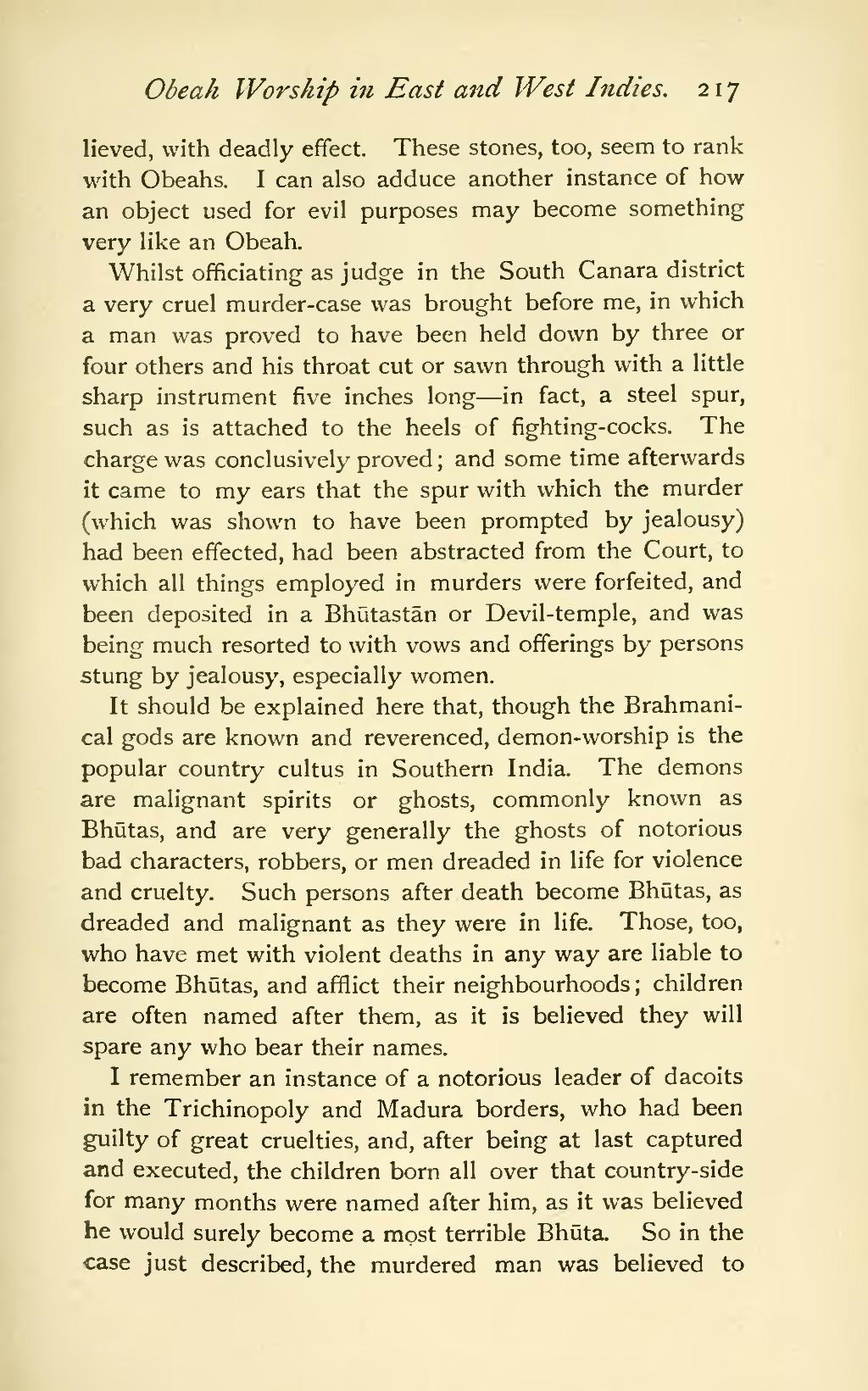lieved, with deadly effect. These stones, too, seem to rank with Obeahs. I can also adduce another instance of how an object used for evil purposes may become something very like an Obeah.
Whilst officiating as judge in the South Canara district a very cruel murder-case was brought before me, in which a man was proved to have been held down by three or four others and his throat cut or sawn through with a little sharp instrument five inches long—in fact, a steel spur, such as is attached to the heels of fighting-cocks. The charge was conclusively proved; and some time afterwards it came to my ears that the spur with which the murder (which was shown to have been prompted by jealousy) had been effected, had been abstracted from the Court, to which all things employed in murders were forfeited, and been deposited in a Bhūtastān or Devil-temple, and was being much resorted to with vows and offerings by persons stung by jealousy, especially women.
It should be explained here that, though the Brahmanical gods are known and reverenced, demon-worship is the popular country cultus in Southern India. The demons are malignant spirits or ghosts, commonly known as Bhūtas, and are very generally the ghosts of notorious bad characters, robbers, or men dreaded in life for violence and cruelty. Such persons after death become Bhūtas, as dreaded and malignant as they were in life. Those, too, who have met with violent deaths in any way are liable to become Bhūtas, and afflict their neighbourhoods; children are often named after them, as it is believed they will spare any who bear their names.
I remember an instance of a notorious leader of dacoits in the Trichinopoly and Madura borders, who had been guilty of great cruelties, and, after being at last captured and executed, the children born all over that country-side for many months were named after him, as it was believed he would surely become a most terrible Bhūta. So in the case just described, the murdered man was believed to
